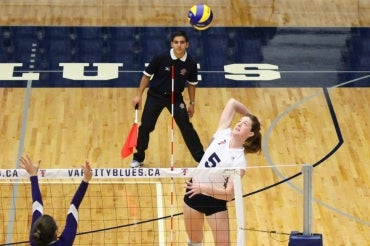Female athletes in team sports need 50 per cent more protein than non-active males: U of T study

Published: November 30, 2017
Macronutrients are an athlete’s best friend.
Carbohydrates and fat provide athletes with fuel and energy, but protein is what allows their bodies to recover from the physical demands of sports and exercise. So, how much protein do active females need to recover from exercise?
A new study from U of T’s Faculty of Kinesiology and Physical Education (KPE), the Hospital for Sick Kids and Ajinomoto Co. suggests it’s 50 per cent more than men who are not active. The study was published last month in the American College of Sports Medicine's Medicine & Science in Sports & Exercise.
The current recommended dietary allowance for protein is set at 0.8 grams per kilogram per day for the general population, however these guidelines don’t take into account the effect of regular exercise on minimum protein requirements. The American College of Sports Medicine recommends that athletes should consume between 1.2 to 2.0 g/kg of protein per day, but the broad range may not capture the specific needs of different athletes in light of their unique exercise demands.
”These recommendations are primarily based on athletes performing exclusively weightlifting or endurance exercises, which lie on opposite ends of the strength-endurance continuum of exercise,” says Daniel Moore, an assistant professor at KPE. “This leaves team sport athletes, such as basketball, hockey or soccer players, who have to have high levels of endurance but also perform stops and starts with high muscle forces, trying to guess what their optimal protein intake may be.”
To further complicate matters, studies examining the protein requirements of different active populations almost exclusively study males, which may limit the ability to translate these findings to active females.
“Despite the fact that females are just as active as males, existing studies primarily address the nutrient needs of males, and in particular strength and endurance athletes,” Moore says. “The purpose of this study was to determine a recommended daily allowance for protein in females engaged in team sports, which typically have elements of both endurance and resistance exercise.”
The study participants, six healthy active young women, performed a modified version of the Loughborough Intermittent Shuttle Test, which simulates the stop-and-go activity in soccer.
Following the exercise, they each consumed a series of meals containing a tracer, a protein building block, which is an amino acid that's a little bit heavier than those naturally occurring in our bodies.
If the tracer appears in the breath after it has been ingested, that’s a sign that we haven’t used it to build new body proteins. By tracking it in the breath and urine samples of the study participants, the researchers were able to determine how much of the protein in their diet was being used to build new protein, which is important for athletes to help them recover from demanding exercise.
The study demonstrated that variable-intensity exercise, like soccer, increases the safe protein intake in female athletes to 1.71g/kg/day, which is above the current daily recommendation of 0.8 g/kg/day for the general population and the 0.93 to 1.2 g/kg/day range for non-exercising males, but within the upper range of 1.2 to 2.0g/kg/day recommended for athletes by the American College of Sports Medicine.
“The study results will serve to provide a more refined athlete-specific recommendation for females engaged in team sports, which is especially significant given the tendency of female athletes to eat less than their male counterparts and in the case of some female soccer players, to consume protein below the present recommendations,” Moore says.
More broadly, he says, this shows the importance for dietary protein requirements to be population-specific.
Next up, the group of researchers will study the protein requirements of female athletes versus male athletes in team sports and in weightlifting.
The study was supported by an Ajinomoto Innovation Alliance Program Award for Moore.



